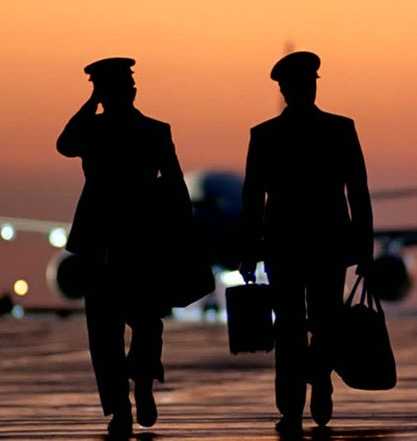Pilot Training Guide
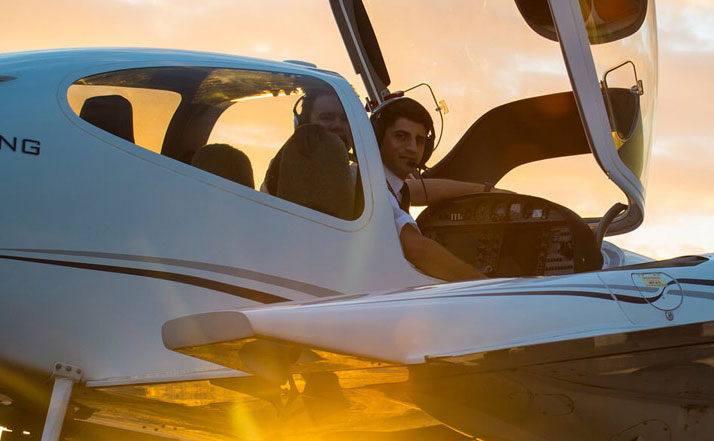
Flight training is exciting, challenging, rewarding, and leads to a fun hobby or fulfilling career. You’ll learn to balance technical training with the freedom of the sky. Flight training will initially be challenging but as you progress it will become second nature. For career pilots training becomes an ongoing part of their work, both for gaining new knowledge and also for keeping their skills fresh.
Reasons to Learn to Fly
Career
The pilot career is no longer the glamorous lifestyle of the jet age. But pilots are still respected and highly trained professionals. Training for a pilot career opens up many different options other than just the airlines.
For Fun or Business
Whether you want to poke holes in the sky on the weekends or pursue the $100 hamburger, flying as a hobby can be a lot of fun. And if your business needs more flexible travel with fewer TSA hassles, business flying can be surprisingly approachable.
Starting Your Flight Training
Choosing a Flight School
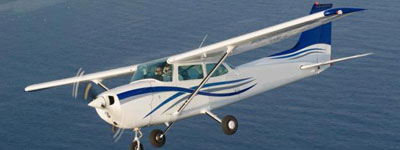
Choosing the correct flight school to meet your needs can be difficult without prior knowledge of the flight training process. Making a hurried decision or choosing a school solely for convenience can have long-term consequences. Setting your goals and planning out a structured approach will be key to your success.
Choosing a Flight Instructor
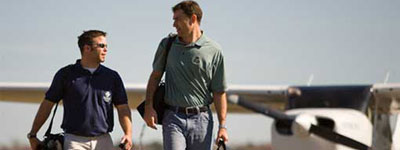
When you dive into the flight training process you’re going to spend a lot of time with your flight instructor. You need to be confident that not only will they have the experience and skills necessary to help you with your goals, but that you know that you can have a productive working relationship with this person. Spending a little more time finding the right flight instructor is investment well spent.
Aviation Universities
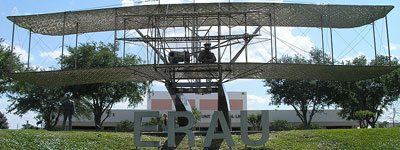
There is some potential advantages to going to a university dedicated to aviation. A more structured and sometimes more rigorous environment can better prepare you for the life-long training of a professional pilot. Pilot employers don’t usually give preference to aviation degrees, however, you can get to the needed Airline Transport Pilot rating quicker.
Frequently Asked Questions
Yes, you can become a pilot as long as you meet the vision requirements for a medical certificate. Your vision needs to be correctable to 20/20, but does not need to be perfect uncorrected.
There is also accommodations available for color blindness, though you will need to be able to perceive those colors necessary for safe performance of airman duties.
You will need to be examined by an FAA approved flight physician, who will issue a medical certificate. The minimum necessary to flight instruction is a Class 3 medical. If you are going to pursue flying as a career, it would be prudent to get a Class 2 or Class 1 medical certificate during your first appointment. A class 2 would allow you to be a commercial pilot. A class 1 is necessary for airline flying.
Many pilot employers are willing to hire applicants without college degrees. However, there is a strong preference for college degrees. Airlines will typically have a stated minimum requirement of a bachelors degree.
Flight training is most effective when you retain and build on knowledge and experience. You should have at least several days a week available for both ground and flight instruction. Additionally, make sure your instructor has enough schedule availability before beginning with them.
A flight school operating under part 61 of the FARs is not an FAA approved flight school. However, it’s flight instructors still go through the same initial training and testing as those that work in FAA approved programs.
A flight school operating under part 141 of the FARs is an FAA approved flight school. There is additional checking and paperwork requirements compared to those schools that are not FAA approved.
There may or may not be a difference in quality of education between the two types of programs. Training in a part 141 does allow for reduced experience requirements for some pilot licenses/ratings. However, the average time to complete most licenses is higher than the standard requirements of part 61.
Yes, there is financing options for flight training. Many of these financing programs require that you obtain your training through an FAA approved school (part 141), though there may also be options for non approved schools as well.
High wing or low wing doesn’t make much difference. What’s important is how well the airplane is equipped and maintained. It’s also important that the school’s trainers are dedicated to pilot training and not to airplane rental.
How a flight school maintains its training fleet is important for both safety and scheduling. Asking questions about maintenance policies and procedures should be part of every school interview.
The FAA requires written knowledge exams, oral exams, and practical tests in airplanes. Each pilot license has different testing requirements. Your flight instructor will guide you along and help you prepare for the necessary testing at each stage. You will need to have an endorsement for your flight instructor for most types of tests attesting that they believe you are prepared for that test.
Some aspects of aviation require an understanding of basic math principles. High school level math and science will give you the educational background necessary to understand basic flight principles. Most math-related activities in aviation are assisted with graphs and charts, and can be worked with a calculator.
Flying requires mental concentration and alertness, combined with the ability to think ahead, anticipate and analyze while at the same time executing routine cockpit procedures. The ability to visualize the physical relationships involved in aircraft maneuvers is an important attribute for pilots. Flying is not necessarily hard, but it does require many skills and attributes. Some of these can be taught, but other skills the student needs to already have. The most important quality needed is motivation.
Greg started his professional pilot journey in 2002 after graduating from Embry Riddle. Since that time he has accumulated over 8,000 hours working as a pilot. Greg’s professional experience includes flight instructing, animal tracking, backcountry flying, forest firefighting, passenger charter, part 135 cargo, flying for a regional airline, a national low cost airline, a legacy airline, and also working as a manager in charge of Part 135 and Part 121 training programs.

